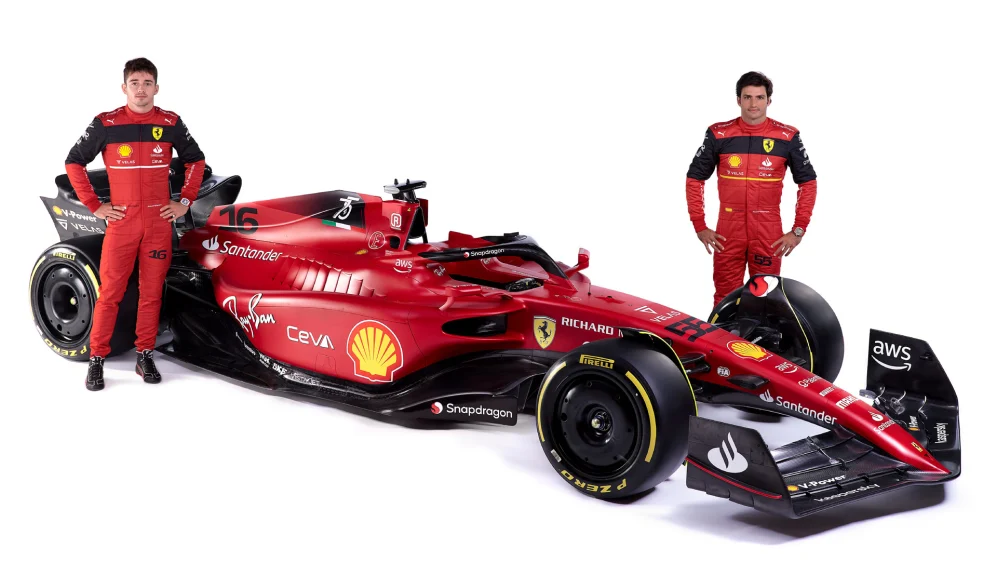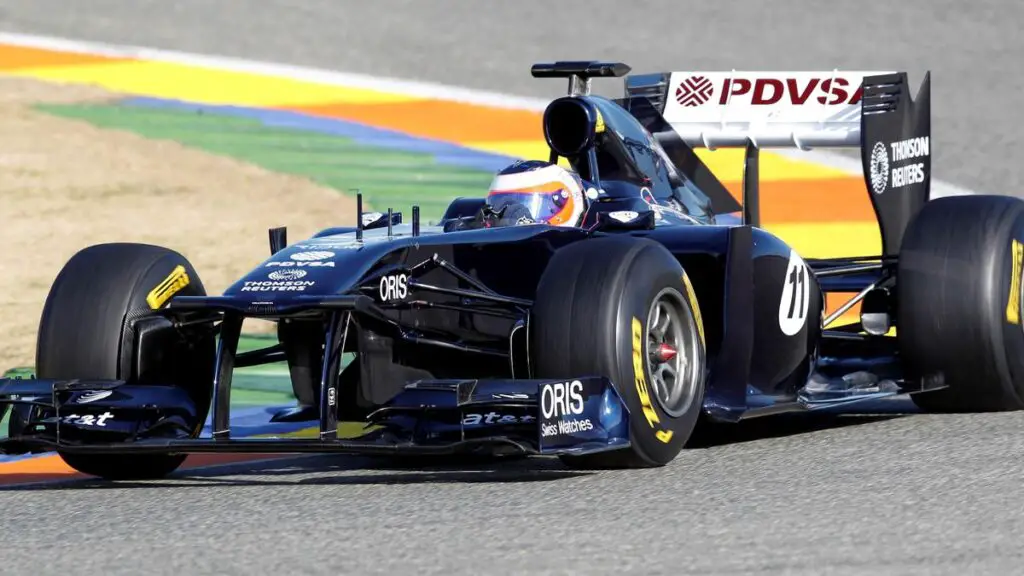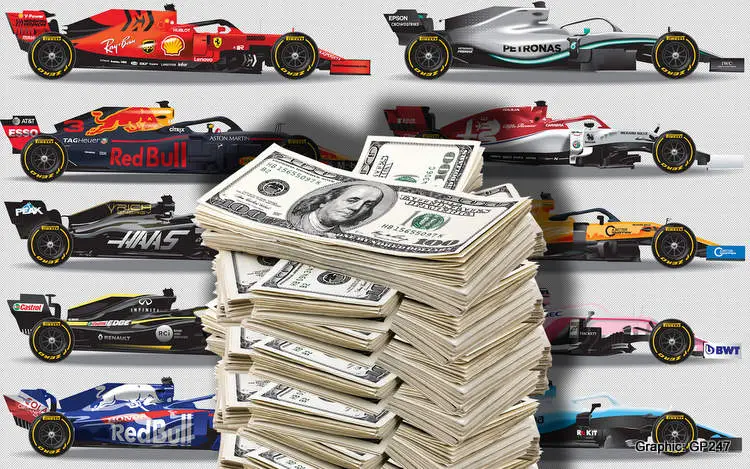As the most prestigious motor-racing competition on the planet how much money does F1 make? It attracts millions of fans and generating billions of dollars in revenue every year. It is the 5th largest sport in terms of revenue.
- American Football : $17 Billion Revenue a Year
- Soccer : $50 billion a year
- Basketball: $7 Billion A Year
- Cricket: $3.5 Billion A Year
- Formula 1: $2.5 Billion A Year
But how does F1 make money and how do the teams that participate in it stay competitive and profitable?
In this article, we will explore the main sources of income and expenditure for F1. We will also look at its teams, as well as the challenges and opportunities they face in the 2022 season.
F1 Money – Revenue Streams?
F1 has three main revenue streams: race promotion fees, media rights and sponsorship. According to its owner Liberty Media, F1 generated $2.5 billion in total revenue in 2022, a 20% increase from the previous year.
F1 Money – Race Promotion Fees
Race promotion fees are the payments that F1 receives from the organizers of each Grand Prix for hosting a race.
These fees vary depending on the location, duration and popularity of each event, but they are usually in the range of $20 million to $40 million per race.
In 2022, F1 had a record 23 races on its calendar, spanning five continents and featuring new venues such as Saudi Arabia and Las Vegas. This means that F1 could earn up to $920 million from race promotion fees alone.
F1 Money – Media Rights
Media rights are the payments that F1 receives from broadcasters and streaming platforms for the rights to show F1 races and related content.
These rights are sold on a multi-year basis, with different deals for different regions and markets. F1 has a global audience of nearly half a billion unique viewers, making it one of the most watched sports in the world. In 2022, F1 reported a growth in F1 TV subscription revenue and increased fees under new and renewed contractual agreements.
Media rights accounted for 36.4% of F1’s primary revenue in 2022, which amounted to $2.107 billion.
F1 Money – Sponsorship
Sponsorship is the payment that F1 receives from companies and brands that want to associate themselves with F1 and its teams, drivers and events.
These sponsors can have their logos displayed on various assets such as cars, helmets, uniforms, trackside banners and digital platforms.
F1 has a diverse portfolio of sponsors, ranging from global corporations such as Rolex, Heineken and DHL to regional partners such as Emirates, Petronas and Fly Emirates.
Sponsorship revenue increased in 2022 due to the recognition of revenue from new sponsors such as Amazon Web Services, Crypto.com and Zoom. Sponsorship accounted for 16.9% of F1’s primary revenue in 2022.
F1 Money – – Expenditure?
F1 has two main expenditure items: team payments and other costs. According to Liberty Media, F1 spent $1.75 billion in total expenditure in 2022, a 25% increase from the previous year.
F1 Money – Team Payments
Team payments are the payments that F1 distributes to the teams that participate in the championship based on their performance and status.
These payments are governed by the Concorde Agreement, a confidential contract that defines the commercial terms between F1, the teams and the FIA (the sport’s governing body).
The current Concorde Agreement runs from 2020 to 2025 and introduces some changes to make the sport more fair and sustainable.
How The F1 Money Is Split

The team payments consist of four elements:
- Column 1: A fixed amount that is equally shared among all teams that have participated in at least two of the previous three seasons.
- Column 2: A variable amount that is distributed according to the teams’ ranking order at the end of each season, with the winner taking the largest share and the others getting less at each step of the ranking.
- Column 3: A bonus amount that is awarded to Ferrari as the longest-standing team in F1 history.
- Column 4: A bonus amount that is awarded to Mercedes, Red Bull, McLaren as teams that have either a special heritage in F1 or have finished among the top three in recent years.
In addition to these elements, there is also a new mechanism called “overage”, which gives teams a share of 20% of what F1 earns above $650 million in any given year.
In total, F1 paid $1.004 billion to the teams in 2022.
The split of this money is listed below
| F1 Teams | Column 1 | Column 2 | Column 3 | Column 4 | Total |
|---|---|---|---|---|---|
| Ferrari | $35 Million | $56 Million | $114 million | N/A | $205 Million |
| Mercedes | $35 Million | $66 Million | N/A | $76 million | $177 million |
| McLaren | $35 Million | $46 Million | N/A | $71 million | $152 million |
| Red Bull Racing | $35 Million | $32 Million | N/A | $33 million | $100 million |
| Alpine | $35 Million | $38 Million | N/A | N/A | $73 million |
| Haas | $35 Million | $35 Million | N/A | N/A | $70 million |
| Williams | $35 Million | $15 Million | N/A | N/A | $60 million |
| Aston Martin | $35 Million | $24 Million | N/A | N/A | $59 million |
| Alpha Romeo | $35 Million | $21 Million | N/A | N/A | $56 million |
| Alpha Tauri | $35 Million | $17 Million | N/A | N/A | $52 million |
F1 Money – Other Costs
Other costs are the expenses that F1 incurs for running its own operations. These include staff salaries, travel, marketing, legal and administrative costs.
These costs increased in 2022 due to higher freight costs with more races held outside of Europe, higher Paddock Club costs associated with higher hospitality attendance, and higher F2 and F3 related costs. Formula 1 also invested in new initiatives such as F1 TV, Esports and Fan Engagement.
F1 Money – Business Models
F1 teams have different business models depending on their ownership structure, size and resources. Generally, they can be divided into two categories: manufacturer teams and independent teams.
F1 Money – Manufacturer Teams?

Manufacturer teams are the teams that are owned or backed by major car manufacturers, such as Mercedes, Ferrari, Alpine (Renault) and Honda (Red Bull).
These teams have access to larger budgets, advanced technology and engineering capabilities, and stronger brand recognition.
They also benefit from synergies between their F1 operations and their road car divisions, such as knowledge transfer, R&D collaboration and marketing opportunities. Manufacturer teams usually aim to win championships and promote their products through F1.
However, manufacturer teams also face some challenges, such as higher expectations, greater scrutiny and political pressure from their parent companies.
They also have to balance their F1 interests with their core business objectives, which may not always align. For example, Honda decided to withdraw from F1 at the end of 2021 due to its focus on electrification and sustainability.
F1 Money – Independent Teams?

Independent teams are the teams that are not owned or backed by major car manufacturers, such as McLaren, Aston Martin, Williams, Alfa Romeo, Haas and AlphaTauri.
These teams have smaller budgets, limited technology and engineering capabilities, and weaker brand recognition. They also rely more on external suppliers and partners for their engines, gearboxes and other components. Independent teams usually aim to survive and compete in F1.
Independent Teams Have Some Advantages
However, independent teams also have some advantages, such as greater flexibility, creativity and autonomy.
They also have more opportunities to collaborate with other stakeholders in F1, such as sponsors, investors and drivers. Independent teams often adopt different strategies and business models to ensure their survival and profitability in F1.
Some of these strategies and business models are:
- Customer Teams: These are the teams that buy most of their car components from another team or manufacturer, such as Haas from Ferrari and AlphaTauri from Red Bull. This allows them to save costs on development and manufacturing, but also limits their performance potential and differentiation.
- B-Teams: These are the teams that have a close technical and commercial partnership with another team or manufacturer, such as Alfa Romeo with Ferrari and AlphaTauri with Red Bull. This allows them to access more resources and technology from their partner, but also reduces their independence and identity.
- Racing Point Model: This is the strategy that was adopted by Racing Point (now Aston Martin) in 2019-2020, when they copied the design of the Mercedes car from the previous year. This allowed them to achieve a significant performance boost with minimal investment, but also sparked controversy and legal disputes with other teams.
- McLaren Model: This is the strategy that was adopted by McLaren in 2020-2021, when they switched their engine supplier from Renault to Mercedes. This allowed them to improve their reliability and competitiveness with a proven power unit, but also required them to adapt their car design and chassis to fit the new engine.
F1 Challenges and Opportunities in 2022

F1 faces several challenges and opportunities in 2022, which will affect its revenue streams and expenditure items, as well as the business models of its teams.
Some of these challenges and opportunities are listed below.
F1 Money – New Regulations
F1 introduced a new set of technical regulations in 2022, which will change the design of the cars significantly. The aim is to make the cars more aerodynamically efficient, less sensitive to turbulence, easier to overtake and more attractive to fans.
The new regulations will also introduce new Tyres from Pirelli, which will be larger (18 inches) and lower-profile than before. The new regulations will require all teams to invest heavily in research and development (R&D), testing and manufacturing of their new cars.
This will increase their costs in 2022 but may also create new opportunities for innovation and competition.
Budget Cap
F1 will continue to enforce its budget cap in 2022 and again into 2023, which limits the amount that teams can spend on their F1 operations to $140 million. This is intended to reduce the financial gap between the teams and create a more level playing field.
However, the budget cap also poses some challenges for the teams, such as managing their resources efficiently, complying with the financial regulations and adapting to the changing costs and inflation rates.
Sustainability
F1 will pursue its sustainability goals in 2022, which include becoming Net Zero Carbon by 2030 and developing a 100% sustainable fuel for its engines.
The sport will also introduce E10 fuel in 2022, which is a mixture of 90% fossil fuel and 10% ethanol.
Formula 1 hopes that these initiatives will reduce its environmental impact. It will also showcase its innovation and leadership in the field of sustainable mobility.
Diversity and Inclusion
F1 will continue to promote diversity and inclusion in 2022. This includes removing barriers, nurturing talent and inspiring change across the sport.
The sport will also expand its scholarship programme for underrepresented groups. Included in this is theF1 Academy for young female drivers. They also support various initiatives such as We Race As One, F1 in Schools and F1 Esports.
Conclusion
F1 is a complex and dynamic sport that involves multiple stakeholders, interests and challenges. It is also a lucrative and exciting sport that attracts millions of fans. As a result it generates billions of dollars in revenue every year.
In 2023, F1 faces some significant changes and opportunities that will affect its revenue streams. F1 strives to achieve its ambitions of becoming more fair, sustainable and inclusive for the future of the sport and its fans.

